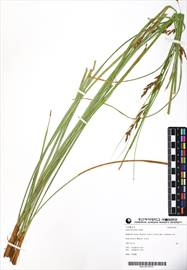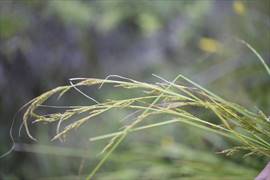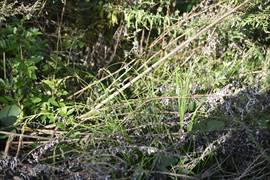Scientific Name
Carex brunnea Thunb.
Subgeneric Classification (Roalson et al. 2021)
| subgenus Carex; Albae-Indica Clade; Graciles section |
Habitats
Occurs in Seoul, Gyeonggi, Chungnam or Gyeongnam.
Stem
Clumped growth, with basal sheath color dark brown to reddish brown, and length about 40-80 cm.
Leaves
Leaves shorter than the stem, have glabrous surfaces, width about 2-4 mm.
Inflorescence
The number of spikes two or more. Spike shapes all same (no distinct differentiation between sexual characteristics), with some spikes bisexual. Spike sexuality androgynous (staminate flowers above the pistillate in the same spike), spikes arranged densely. Terminal spike sexuality androgynous. Lateral spike sexuality androgynous, and drooping. Terminal spike length about 1-2.5 cm. Number of spikes per node two or more (two or more spikes in one bract).
Bract
Lowermost bract shape leaf-like.
Glume
Staminate glume awn absent. Pistillate glume awn absent. Pistillate glume color whitish green to light brown.
Perigynium
Transverse section lenticular to biconvex. Perigynium shape elliptical to narrow elliptical (the broadest part in the center) or ovate-lanceolate (the broadest part near the base), and densely flowered. Perigynium glabrous or hairy or pubescent. Beak short (beak less than one-third of the total length) or long (beak more than one-third of the total length), thin (the beak is clearly distinguished from the perigynium, and the starting point of the beak is less than one-third of the widest part of the perigynium), with bidentate to bifid mouth. Length 2-3 mm.
Achene
Appendage absent, no constrictions.
Copyright © 2024. All rights reserved.



